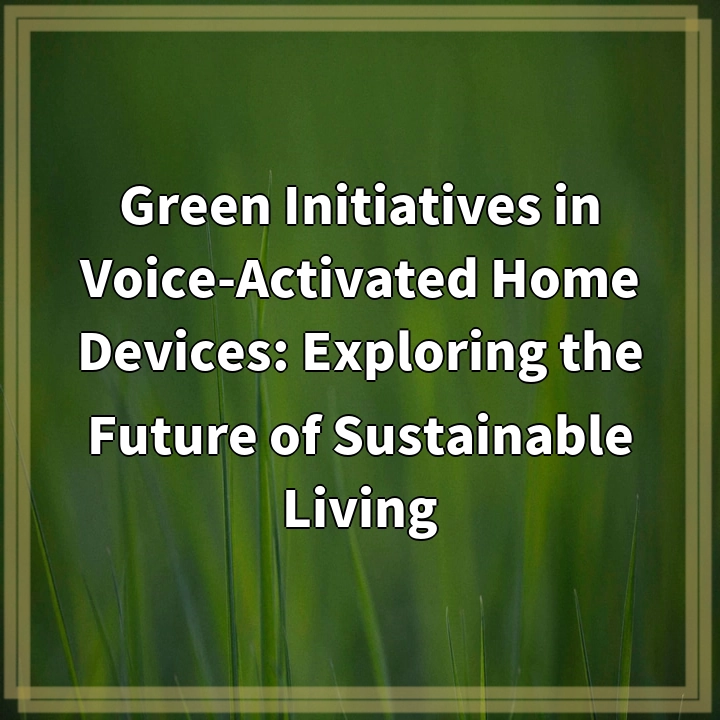
What it is:
Voice-activated home devices, such as smart speakers and voice assistants, have gained immense popularity in recent years. These devices, powered by artificial intelligence and connected to various smart home technologies, allow users to control their home environment using voice commands. Green initiatives in voice-activated home devices extend this functionality towards promoting sustainable living and environmental consciousness.
Real-world problems:
Despite the convenience and efficiency offered by voice-activated home devices, there are real-world problems that need to be addressed in the context of green initiatives. One such problem is the energy consumption associated with these devices. While they claim to promote energy efficiency by controlling various appliances and reducing waste, the constant power usage of the devices themselves can offset these gains.
The manufacturing and disposal of voice-activated home devices also pose environmental challenges. The production process involves the extraction of raw materials, including rare-earth minerals, that have significant environmental and social impacts. Additionally, the disposal of these devices can lead to e-waste, which often ends up in landfills or is improperly recycled, further polluting the environment.
Privacy and data security are other concerns that need to be addressed. Voice-activated home devices constantly listen for voice commands, raising questions about the collection and storage of personal data. Without adequate safeguards in place, there is a risk of data breaches and unauthorized access to sensitive information.
Overall, while green initiatives in voice-activated home devices have the potential to transform our homes into more sustainable and eco-friendly spaces, it is important to consider and mitigate these real-world problems for a truly impactful and responsible implementation.

Solutions for Green Initiatives in Voice-Activated Home Devices:
1. Energy Efficiency:
Manufacturers need to prioritize energy efficiency in the design and operation of voice-activated home devices. This includes optimizing power consumption during standby mode, utilizing low-power processors, and implementing smart scheduling algorithms to minimize unnecessary energy use.
2. Sustainable Manufacturing and Disposal:
Companies should adopt sustainable practices in the manufacturing and disposal of voice-activated home devices. This includes using recycled materials, reducing the use of hazardous substances, and implementing take-back programs to ensure proper recycling and disposal of old devices.
3. Privacy and Data Security:
Manufacturers must prioritize user privacy and data security. This includes providing clear and transparent privacy policies, implementing strong security measures to protect personal data, and allowing users greater control over the data collected by the devices.
4. Education and Awareness:
Raising awareness among consumers about the environmental impact of voice-activated home devices is crucial. Manufacturers and environmental organizations should collaborate to educate users on energy-saving features, proper usage and disposal methods, and the importance of privacy and data protection in order to encourage responsible usage.
By implementing these solutions, we can harness the full potential of voice-activated home devices in promoting sustainable living and minimizing their environmental footprint.















